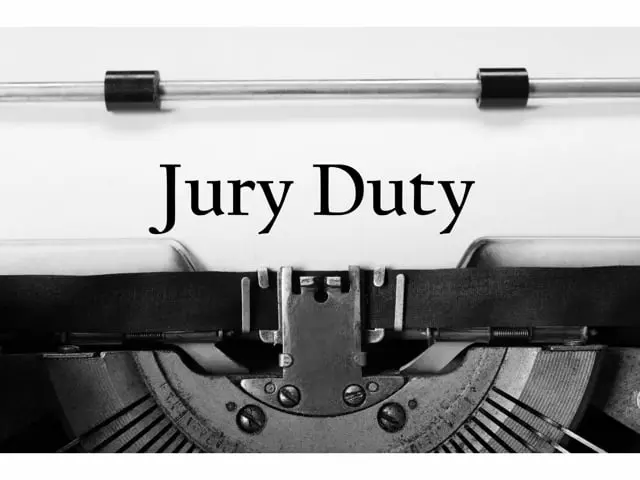En el complejo mundo de la fianzas, risk assessment plays a crucial role in protecting the interests of all parties involved. From bail bond companies to defendants and the broader community, a thorough evaluation of potential risks is essential for maintaining the integrity of the bail system and ensuring public safety. As the bail bond industry continues to evolve, the importance of accurate and comprehensive risk assessment techniques has become increasingly apparent, shaping the way bail decisions are made and bonds are issued.
En el fondo, bail bond risk assessment involves evaluating the likelihood that a defendant will appear for their scheduled court dates and comply with the conditions of their release. This process requires a delicate balance of factors, including the nature of the alleged offense, the defendant’s criminal history, their ties to the community, and their financial resources. By carefully weighing these elements, bail bond agents can make informed decisions about whether to post bail for a particular defendant and under what conditions.
One of the primary tools used in modern bail bond evaluación de riesgos es el pretrial risk assessment tool. These sophisticated algorithms analyze a wide range of data points to generate a risk score for each defendant. While these tools have gained popularity in recent years, their effectiveness and fairness have been subjects of ongoing debate within the legal community. Critics argue that some risk assessment tools may perpetuate biases or fail to account for individual circumstances adequately. However, proponents maintain that when used correctly, these tools can provide valuable insights and contribute to more consistent and objective bail decisions.
El papel de bail bondsmen in the risk assessment process cannot be overstated. These professionals bring years of experience and intuition to the table, often supplementing data-driven assessments with their own judgment and knowledge of local communities. A skilled bail bondsman can identify subtle risk factors that may not be captured by automated tools, such as a defendant’s demeanor, family support system, or recent life changes that could impact their likelihood of appearing in court.
One crucial aspect of bail bond risk assessment is evaluating the flight risk of a defendant. This involves considering factors such as the severity of the charges, the potential penalties if convicted, and the defendant’s past history of court appearances or failures to appear. Bail bond agents must carefully weigh these factors to determine the likelihood that a defendant will attempt to flee the jurisdiction to avoid prosecution. In cases where the flight risk is deemed high, additional conditions or higher bail amounts may be necessary to ensure the defendant’s compliance with court orders.
Another important consideration in bail bond risk assessment is the potential danger to the community if the defendant is released. This is particularly relevant in cases involving violent crimes or repeat offenders. Bail bond agents must carefully evaluate the nature of the alleged offense and the defendant’s criminal history to assess the likelihood of further criminal activity while out on bail. In some cases, this assessment may lead to the decision not to post bail for a high-risk defendant, prioritizing public safety over potential business opportunities.
El concepto de collateral plays a significant role in bail bond risk assessment. When a defendant or their family members offer valuable assets as collateral, it can serve as an additional incentive for the defendant to comply with bail conditions and appear in court. Bail bond agents must carefully evaluate the value and liquidity of offered collateral to ensure it provides adequate security for the bond. This process often involves verifying ownership, assessing market value, and considering any existing liens or encumbrances on the property.
In recent years, technological advancements have significantly impacted the bail bond risk assessment process. Electronic monitoring devices, for example, have become increasingly sophisticated, allowing bail bond agents to track defendants’ movements and ensure compliance with geographic restrictions. These tools can provide an additional layer of security and may influence risk assessments by offering a means to mitigate certain risks associated with pretrial release.
El papel de cosigners in the bail bond process is another critical element of risk assessment. When a friend or family member agrees to cosign a bail bond, they take on significant financial responsibility. Bail bond agents must carefully evaluate the cosigner’s ability to meet this obligation, considering factors such as their income, assets, and credit history. A strong cosigner can significantly reduce the perceived risk of a bail bond, potentially leading to more favorable terms for the defendant.
One emerging trend in bail bond risk assessment is the increased focus on mental health considerations. Recognizing the complex relationship between mental health issues and criminal behavior, some jurisdictions are incorporating mental health evaluations into their pretrial assessment processes. Bail bond agents may need to consider a defendant’s mental health history, current treatment plans, and access to support services when evaluating the risks associated with their release.
El impacto de abuso de sustancias on bail bond risk assessment is another area of growing concern. Defendants with a history of drug or alcohol abuse may be considered higher risk due to the potential for relapse and its associated consequences. Some bail bond companies are partnering with treatment facilities or requiring participation in substance abuse programs as a condition of bail, aiming to address underlying issues that may contribute to criminal behavior.
El concepto de pretrial services has gained traction in many jurisdictions as an alternative or supplement to traditional bail bonds. These programs often involve risk assessment tools and supervised release options, which can impact the bail bond industry’s approach to risk evaluation. Bail bond agents must stay informed about available pretrial services in their area and consider how these programs might influence their own risk assessments and business practices.
Legal reforms related to bail and pretrial release have significant implications for bail bond risk assessment. As some states move towards eliminating cash bail for certain offenses or implementing risk-based release systems, bail bond companies must adapt their assessment techniques to remain relevant and effective. This may involve developing more nuanced risk evaluation methods that go beyond traditional financial considerations.
El papel de data analytics in bail bond risk assessment continues to evolve. Advanced statistical techniques and machine learning algorithms are being employed to identify patterns and predict outcomes with greater accuracy. However, the use of these tools raises important ethical questions about privacy, fairness, and the potential for algorithmic bias. Bail bond companies must carefully consider the implications of relying on these technologies and ensure they are used responsibly and transparently.
Community ties remain a crucial factor in bail bond risk assessment. Defendants with strong connections to their local community, such as stable employment, family responsibilities, and involvement in community organizations, are often considered lower risk. Bail bond agents must develop effective methods for evaluating and verifying these ties, which may involve conducting interviews, checking references, or collaborating with community partners.
El concepto de risk mitigation is central to the bail bond industry. Once potential risks have been identified through the assessment process, bail bond agents must develop strategies to minimize these risks. This may involve implementing strict reporting requirements, mandating participation in educational or treatment programs, or requiring the surrender of passports or other travel documents. The effectiveness of these mitigation strategies can significantly impact the decision to issue a bail bond and the terms under which it is offered.
Financial stability is another critical component of bail bond risk assessment. Evaluating a defendant’s economic situation goes beyond simply determining their ability to pay the bond premium. Bail bond agents must consider factors such as employment history, income stability, and financial obligations to assess the likelihood that the defendant will be able to meet the financial terms of their release and avoid temptations that might lead to further criminal activity.
El papel de technology in enhancing bail bond risk assessment continues to expand. From sophisticated background check databases to real-time monitoring systems, technological tools are providing bail bond agents with more comprehensive and up-to-date information to inform their risk evaluations. However, the reliance on technology also raises concerns about data accuracy, system reliability, and the potential for technical failures to impact bail decisions.
Cultural competence is becoming increasingly important in bail bond risk assessment. As communities become more diverse, bail bond agents must develop the skills and knowledge necessary to accurately evaluate risk factors across different cultural contexts. This may involve understanding cultural norms, family structures, and community dynamics that could influence a defendant’s behavior and compliance with bail conditions.
El concepto de rehabilitation potential is gaining attention in bail bond risk assessment. Some argue that evaluating a defendant’s willingness and ability to engage in rehabilitative programs should be a factor in bail decisions. Bail bond agents may need to consider available rehabilitation resources and a defendant’s history of participation in such programs when assessing risk and determining appropriate bail conditions.
Transparency in the risk assessment process is crucial for maintaining public trust in the bail bond system. Bail bond companies must be able to explain their assessment methods and decision-making processes clearly and consistently. This transparency can help address concerns about fairness and bias in bail decisions while also educating defendants and their families about the factors that influence bail determinations.
El impacto de social media on bail bond risk assessment is an emerging area of consideration. A defendant’s online presence and social media activity can provide valuable insights into their behavior, associations, and potential flight risk. However, the use of social media information in risk assessments raises important privacy concerns and questions about the reliability and context of online content.
Recidivism prediction is becoming an increasingly important aspect of bail bond risk assessment. By analyzing patterns of repeat offenses and identifying factors that contribute to recidivism, bail bond agents can make more informed decisions about the risks associated with releasing certain defendants. However, the use of recidivism prediction tools must be balanced with concerns about fairness and the potential for self-fulfilling prophecies.
El papel de victim input in bail bond risk assessment is a complex and often controversial topic. Some argue that victims should have a voice in bail decisions, particularly in cases involving violent crimes or ongoing threats. Bail bond agents may need to consider victim statements or concerns when evaluating the potential risks associated with a defendant’s release, while also maintaining objectivity and respecting the presumption of innocence.
Environmental factors are increasingly being recognized as relevant to bail bond risk assessment. Issues such as homelessness, access to transportation, and neighborhood crime rates can all impact a defendant’s ability to comply with bail conditions and appear in court. Bail bond agents must develop strategies for evaluating these environmental factors and considering their potential impact on risk levels.
El concepto de dynamic risk assessment is gaining traction in the bail bond industry. This approach recognizes that risk factors can change over time and emphasizes the importance of ongoing evaluation throughout the pretrial period. Bail bond agents may need to implement systems for regularly reassessing risk and adjusting bail conditions or supervision levels as needed.
Legal liability considerations play a significant role in bail bond risk assessment. Bail bond companies must carefully balance their desire to provide services and generate revenue with the potential legal and financial consequences of posting bail for high-risk defendants. This often involves consulting with legal experts and maintaining comprehensive insurance coverage to mitigate potential losses.
El impacto de economic factors on bail bond risk assessment cannot be overlooked. Economic downturns, job market fluctuations, and changes in local industries can all affect a defendant’s stability and likelihood of complying with bail conditions. Bail bond agents must stay informed about economic trends and consider their potential impact on risk evaluations.
Ethical considerations are at the heart of effective bail bond risk assessment. Bail bond agents must navigate complex moral questions about fairness, equality, and the balance between public safety and individual rights. Developing and adhering to a strong ethical framework is essential for maintaining the integrity of the risk assessment process and the bail bond industry as a whole.
In conclusion, the importance of bail bond risk assessment in protecting all parties cannot be overstated. As the criminal justice system continues to evolve, bail bond companies must adapt their risk assessment techniques to meet new challenges and address emerging concerns. By embracing technological advancements, considering a wide range of factors, and maintaining a commitment to fairness and transparency, the bail bond industry can continue to play a vital role in the pretrial process while effectively managing risks and protecting the interests of all stakeholders involved.
Website citations:
- https://www.captira.com/blogs/bail/background-checks-for-bail
- https://southernbailbonds.com/bail-bonds-pretrial-risk-assessment-tools-not-working-as-touted
- https://www.thebailboys.com/what-do-bail-agents-provide/
- https://acesbailbondsct.com/2024/08/the-role-of-bail-bonds-in-high-risk-cases/
- https://abbabailbonds.com/understanding-bail-bonds-in-banning-larry-d/
- https://www.andycallifbailbonds.com/faqs/the-role-of-bail-bonds-in-the-criminal-justice-system/
- https://www.nacdl.org/Article/June2018-MakingSenseofPretrialRiskAsses









